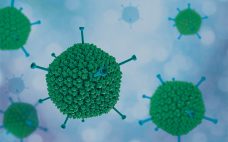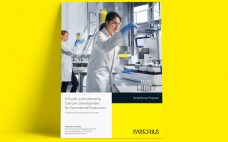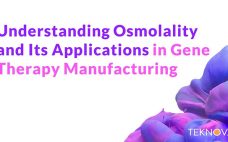When we began building our cleanroom PODs a little over ten years ago, more than one industry stalwart expressed confusion and/or concern as to how our prefabricated approach would even work. I came up with several quick retorts like āWhen you buy a bioreactor, do you design it yourself and have it assembled at your site?ā Some would get it. Some took more convincing. We decided to convince further by consistently getting better. When we grew to adolescence and had…
Sponsored Content
CAPĀ®Ad ā A Versatile Platform for RCA-free, Industrial Scale Adenoviral Vector Production
Adenoviral vectors are frequently used as gene delivery tools for various medical applications. In most cases, replication-incompetent adenoviruses are employed, which, once they have infected a target cell, cannot spread further in the patientās body. In such applications, regulatory guidelines require that the formation of replication-competent adenoviruses (RCA) in the production process must be minimized. Since the risk of RCA occurrence depends on the adenoviral vector and the cell line used for generating the virus stock and for manufacturing the…
PendoTECH Sensors and Industry 4.0: Integrating a PendoTECH Single Use Sensor System with a Digital Highway
Biopharmaceutical manufacturing is currently evolving with the progression of Industry 4.0. Industry 4.0 refers to the ongoing Fourth Industrial Revolution, which is currently transforming modern manufacturing and production practices through the use of āsmartā technology. This is especially appealing to the biopharmaceutical industry, where production can be a long, meticulous, complex processes, and optimizing manufacturing procedures is critical for success. As a leading supplier of single use technology for the biopharmaceutical industry, PendoTECH has recently explored how its products can…
Big Solutions Come in Small Packages: Expanding Sterile Connection Technology to Small-Format Product or Process Fluid Volume Transfer Applications
This webcast features: Troy Ostreng, Senior Product Manager, Colder Products Company In state-of-the-art biopharmaceutical manufacturing, youāre challenged to engineer and operate processes that are robust, reliable and repeatable. Building on the inventiveness of CPC and its AseptiQuikĀ® Series Connectors, the leader in single-use connection technology, the companyās new MicroCNX™ Series Connectors provide a modern alternative to the tube welding process. In this presentation, CPCās biopharma senior product manager, Troy Ostreng highlights how this new category of aseptic, sterile micro-connectors provides…
The Importance of Raw Materials in Viral Vector Manufacturing
Focus on transfection reagent. The rapid advance of so many gene therapy candidates is creating several key challenges. There is a strong need for higher viral vector yields and scalable manufacturing to reduce costs of gene therapy for affordable patient treatment, all of that while meeting cGMP compliance to ensure patient safety which, push comes to shoves, always comes first. A critical step for viral vector manufacturing is sourcing of raw materials to maximize production yield while meeting quality requirement.…
Successful Drug Development with Synthetic Lipids: Critical Aspects and Strategies
Currently gaining enhanced momentum due to their vital role in the development of vaccines against COVID-19, lipid-based formulations and lipid nanoparticles have shown a lot of promise in drug development and delivery particularly because of their ability to enhance active pharmaceutical ingredient (API) stability by protecting the API from immune response, proteases and other factors; boost the solubility and bioavailability of drugs with poor water solubility; passively target inflamed or tumor tissues due to their leaky vasculature, known as the…
A Guide to Accelerating Cell Line Development for Commercial Production
Effective, high-quality cell line development (CLD) is essential for success in the commercialization of protein biologics, but there is no one right way to tackle it. Some companies have extensive in-house capabilities and look for reliable equipment suppliers to help streamline early-stage development and enable a smooth transition to manufacturing. On the other end of the spectrum, certain companies need a fully outsourced solution to provide cell lines, products, and experienced professionals to oversee the entire CLD project. And others…
Commercial Scale Insect Cell Culture: Opportunity and Challenges in a CHO Centric World
This webcast features: Sharyn Farnsworth, Principal Scientist and Upstream Process Development-Cell Culture Group Leader, FUJIFILM Diosynth Biotechnologies A strategy for scale up and manufacture of a recombinant protein from Insect Cell Culture (ICC) using a Baculovirus Expression Vector System (BEVS) should be mapped out during the earliest stages of process development. The challenges of recombinant protein expression using ICC/BEVS production systems are different from more commonly used expression systems such as Chinese hamster ovary (CHO) and few vendors have the…
Reagents Matter ā Osmolality Testing in Gene Therapy Manufacturing
Osmolality testing provides a versatile measure of solute concentration that is an important consideration in the manufacture of gene therapies. This white paper discusses how monitoring osmolality of media during upstream viral vector production and reagents during downstream purification processes can influence quality of the final product. The dependence of multiple biological processes on osmolality, coupled with the usefulness of its measurement in vector quality control, means that osmolality testing is a powerful method to support a high yield of…
Guidelines for Developing a High Cell Density Cryopreservation Process
Biopharmaceutical manufacturers are leveraging several approaches to intensify processes with a goal of improving efficiency and productivity and reducing costs ā all while ensuring the highest quality standards. The upstream workflow offers several opportunities to apply next generation technologies and methods to achieve these important goals. In this white paper we discuss integration of high cell density cryopreservation (HCDC) in the seed train and explore key considerations for developing a cryopreservation process including choice of cryoprotectant and freezing techniques.










